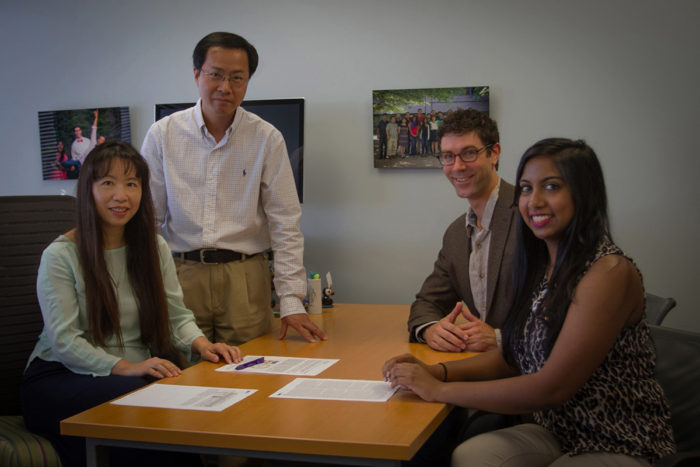
A properly formed protein is a bit like a sheet of paper folded into a piece of origami. Parts of proteins that are initially far away can end up right next to each other, making apparently distant mutations contenders for driving tumor growth. Image credit: Beth Anglin
Examining databases of proteins’ 3-D shapes, scientists at Washington University School of Medicine in St. Louis have identified more than 850 DNA mutations that appear to be linked to cancer. The information may expand the number of cancer patients who can benefit from existing drugs.
The study, published June 13 in Nature Genetics, detailed a list of the mutations and associated drugs that may work against them. The researchers included drugs already approved for use in patients by the Food and Drug Administration (FDA) as well as drugs being evaluated in clinical trials and in preclinical studies.
“Until recently, studies of proteins’ roles in cancer have focused on the unfolded or linear sequences of these proteins,” said senior author Li Ding, PhD, associate professor of medicine and director of computational biology for the Division of Oncology. “But in the body, proteins exist naturally in specific 3-D configurations. We developed a computational method that allows us to take these 3-D structures into account as we look for mutations that may be driving cancer.”
Proteins carry out the body’s cellular functions. A properly formed protein is a bit like a sheet of paper folded into a piece of origami. Parts of proteins that are initially far away can end up right next to each other. In this way, distant mutations that might have been disregarded as unimportant suddenly become major contenders for driving tumor growth if their folded positions bring them close to parts of the protein known to play roles in cancer.
The scientists initially focused on known clusters of cancer mutations in important proteins across 19 types of cancer. They started out with mutations concentrated in the same linear region of the DNA sequence (cancer mutation hot spots) and targeted by or potentially responsive to existing drugs. They then mined databases with information about the 3-D structures of the proteins to look for additional mutations that are linearly distant from the clusters but end up in the thick of things when the proteins’ natural, folded shapes are taken into account.
In addition to studying protein interactions with drugs, the investigators identified mutations that interfere with how proteins interact with each other, which also can play roles in cancer. Ding and her colleagues said many mutations that interfere with protein-protein interactions can’t be identified using conventional methods that don’t consider the 3-D structure. While this study focused on cancer, Ding said this computational tool can be used to study genetic variation contributing to many types of disease, such as diabetes, heart disease, drug addiction and others.
Ding and her collaborator Feng Chen, associate professor of medicine and co-corresponding author of this study, also looked more closely at one particular gene, EGFR, to experimentally evaluate the suggested roles of two novel mutations they identified. In patients’ tumor samples identified as having these mutations, the researchers found evidence of increased levels of EGFR activation, suggesting the mutations likely play active roles in cancer despite their distant locations. According to Chen, more research is needed to investigate whether EGFR inhibitors would be effective in patients carrying these mutations with previously unknown functions.
“As major sequencing projects continue to accumulate data on human cancer genomes, a daunting task is to identify the ‘functional’ mutations among millions of bystander alterations,” Ding said. “The strategy we developed is an effective way to sift through millions of mutations and come up with a list of these that are most likely to respond to drugs and benefit patients.”
Other key contributors to the study include Beifang Niu; Adam Scott; Sohini Sengupta; Matthew Bailey; Jie Ning; and Michael Wendl.

Comments and respectful dialogue are encouraged, but content will be moderated. Please, no personal attacks, obscenity or profanity, selling of commercial products, or endorsements of political candidates or positions. We reserve the right to remove any inappropriate comments. We also cannot address individual medical concerns or provide medical advice in this forum.